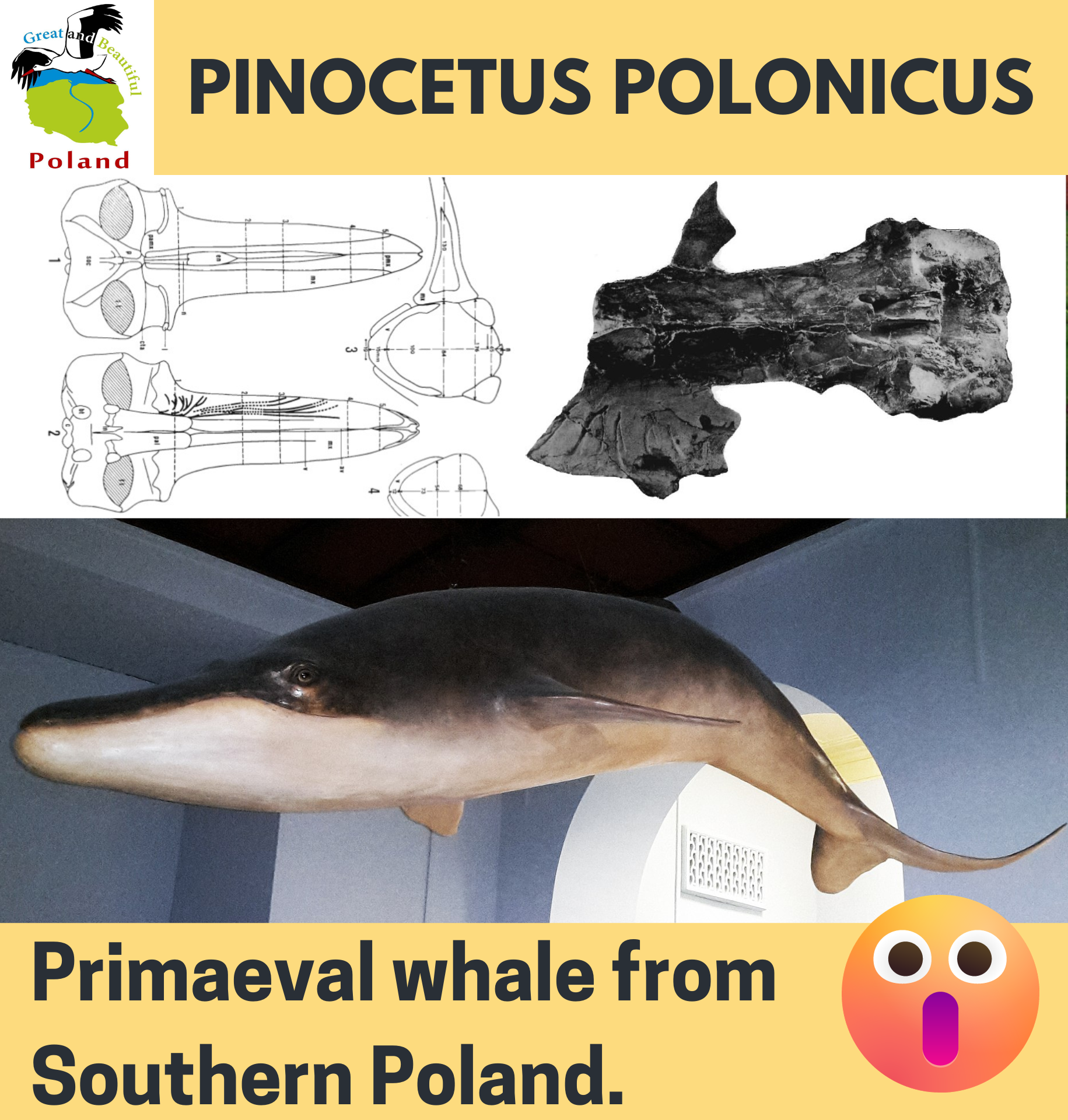
🇬🇧Everyone knows that today the sea is in the north of Poland🇵🇱🌊🧭, while in the south there are mainly mountains🏞️. However, only 13 million years ago, the area of the pre-Carpathian depression was occupied by the warm, almost tropical Paratethys Sea🏝️. In addition to fossils of fish and fowl🐠🐦, we find numerous cetaceans in southeastern Poland. Porpoises, dolphins and dolphinfish represent Toothfish🐬. The most valuable discovery, however, was the primaeval whalefish near Pinczow, a whale that filtered small prey from the water using the whalebones in its mouth🐳.
Pinocetus Polonicus, which lived about 14 million years ago, still possessed several primitive features of its terrestrial ancestors, such as the structure of its ribs and a low-set nasal opening🦴. Because of this, it was an inferior swimmer to today's cetaceans but excelled in shallow, coastal waters🐋.
Three skeletons of that species were found in total, estimated at over four and over seven meters. Two can be viewed at the Natural History Museum of Wroclaw University and the Geological Museum in Kielce🏛️.
Cetus is Latin for a whale, the generic name Pinocetus means 'Whale of Pinczow'.
🇵🇱Pradawny wieloryb z południowej Polski.
Każdy wie, że dziś może znajduje się na północy Polski🌊🇵🇱🧭, na południu zaś znajdują się co najwyżej góry🏞️. Jednak zaledwie 13 milionów lat temu obszar obniżenia przedkarpackiego zajmowało ciepłe, niemal tropikalne, Morze Paratetydy🏝️. Poza skamieniałościami ryb i ptactwa🐠🐦 znajdujemy w południowo wschodniej Polsce liczne walenie. Zębowce reprezentują morświny, delfiny i delfinowce🐬. Najcenniejszym znaleziskiem było jednak odkrycie w okolicach Pińczowa pradawnego fiszbinowca, wieloryba filtrującego z wody drobne ofiary z użyciem znajdujących się w jamie ustnej fiszbinów🐳.
Pinocetus polonicus żyjący około 14 milionów lat temu posiadał jeszcze szereg prymitywnych cech jego lądowych przodków, np. budowę żeber oraz nisko osadzony otwór nosowy🦴. Z tego względu był gorszym pływakiem niż dzisiejsze walenie, ale doskonale radził sobie w płytkich, przybrzeżnych wodach🐋.
W sumie odnaleziono 3 szkielety tego gatunku, oceniane na ponad cztery i ponad siedem metrów. Dwa z nich można podziwiać w Muzeum Przyrodniczym Uniwersytetu Wrocławskiego oraz jeden w Muzeum Geologicznym w Kielcach🏛️.
Cetus to po łacinie wieloryb, nazwa rodzajowa pinocetus oznacza "wieloryba z Pińczowa".
CC BY-SA 4.0 deed: https://creativecommons.org/licenses/by-sa/4.0/ Author: Czyzewska T, Ryziewicz Z. ; logo, frame and text added; 
CC BY-SA 4.0 deed: https://creativecommons.org/licenses/by-sa/4.0/ Author: Thorkik ; Part of the picture. Logo, frame and text added; 
CC BY-SA 3.0 deed: https://creativecommons.org/licenses/by-sa/3.0/deed.en ; Author: FunkMonk ; logo, frame and text added; 